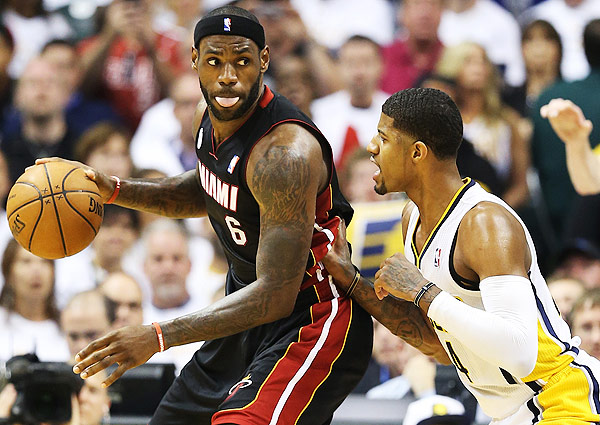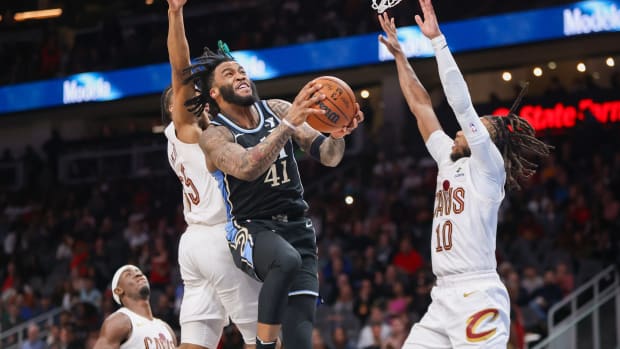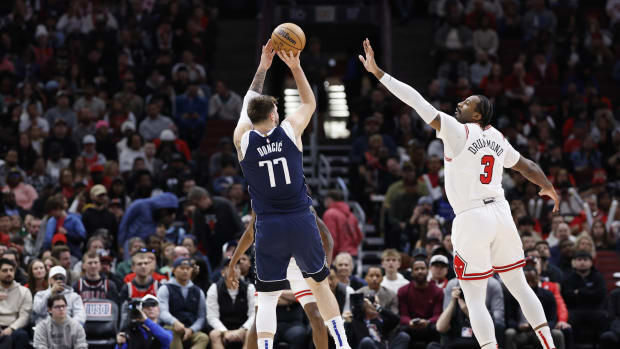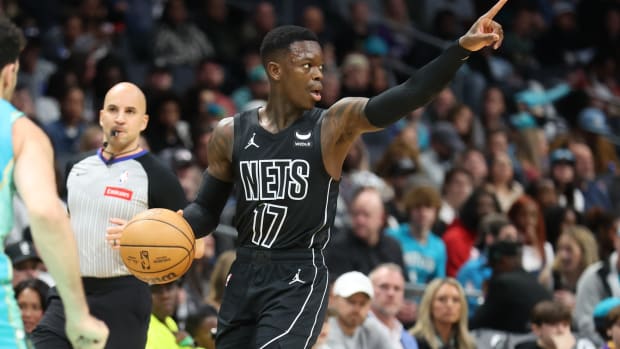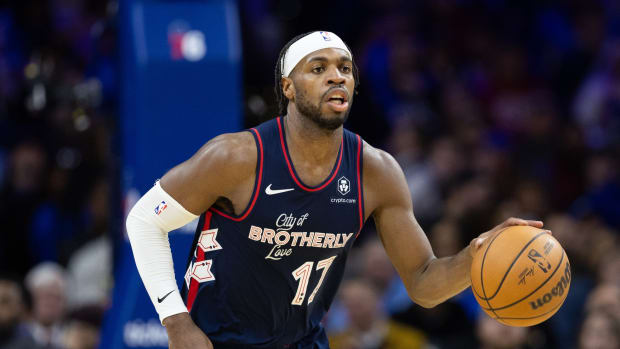LeBron James' post game still on rise
LeBron James continues to grow more and more dangerous from the low post. (Andy Lyons/Getty Images)
Basketball development is a fluid, ongoing process. It doesn't stop or slow with the addition of some new skill, nor does it come to a halt when a player reaches a certain age. The gains made aren't always glamorous or even noticeable, but the perpetual endeavor for refinement is so often what separates the very good from the truly great.
LeBron James is unquestionably among the latter group at this point, though he still rarely gets enough credit for the constant churning of his basketball evolution. His all-world play has become so well established that we often see him as an unstoppable entity rather than a jaw-dropping aggregate. James is a shooter, a driver, a passer, a defender and even a post-up player. There is a wide appreciation for what James can do in total, and yet his game is so vast that it distracts from the kind of smart, steady improvement he cultivates on a micro level.
Case in point: James' work from the low post. The notion of LeBron as a post player is a theme culled from year-old game stories, as the Heat have gradually created more opportunities for James to operate with his back to the basket over the past two seasons.
That shift, in itself, was a dramatic one. Although James had regularly used his size to great advantage when attacking the rim in the past, the 2011-12 season was the first time in James' career that he was schemed to the low block with any regularity. It was a development several seasons in the making, and one accentuated by a postseason tweak to Miami's lineup that necessitated James to assume some of the duties of a traditional power forward.
Since that time, James has only gotten better in his work on the block despite the fact that he has yet to really develop any new, go-to post moves. His repertoire is essentially the same as it was a year ago, and if anything, he actually attempts fewer sweeping hook shots (his experimental addition a season ago) than he did previously. But with experience in the post has come a better understanding of that space, and a subtle progression in the post-up game of an already dominant player. Some of that understanding is a byproduct of his expanded field of vision, as James has made a habit of facing up defenders on the block to survey the floor before beginning to back down his opponent:
One can almost see James plotting out angles and counters in his head. By doing a quick about-face on the catch, James gets a quick snapshot of where the help might be coming from, establishes clean positioning that helps him begin backing down opponents with better balance and also creates an immediate opportunity for a quick pass, drive, or jumper. It's a small tweak, but one that gives James a better opportunity to size up every factor on the floor worth considering.
This, more than anything, is indicative of the growth that James has undertaken in the post over the course of this season. He's still reliant on simple hooks and turnaround jumpers, but his entire low-post enterprise is rooted in better footwork and a newfound level of control -- incredible assets for a player who can read the floor and create advantages so easily.
The same internal process that allows James to read the floor as a playmaker off the dribble grants him full domain of the post. When the double teams inevitably come, James is quick to make both the simple pass out to the perimeter or the more difficult cross-court feed to an open shooter. When his opponent overplays in any particular direction, James identifies the corresponding weakness and exploits it with ambidexterity. When he finds himself in unfavorable position, James is more willing than most to kick the ball out to the perimeter for a re-post, knowing full well that his teammate on the outside will re-establish him inside. With a size advantage against most opponents, James backs his way into the easiest shot possible unless the help forces him to do otherwise, thus foregoing the ill-advised string of fakes and reverses that plague other burgeoning post players. Every decision is made in the name of simplifying a low-post process that need not be complicated.
James and the Heat's coaching staff have worked hard to make the post game come easy, and part of that development comes in looking to set up James with advantageous position on the catch. Many of James' post-up possessions begin with a familiar cut across the paint (usually from the right wing to the left) with the help of a screen, which allows him to make post catches cleanly without having to battle for position. Yet with James becoming a more obvious post-up option for Miami, Erik Spoelstra has turned that expectation on its head with this clever counter:
With this set, James runs to the left block as normal, but gradually spins and seals while the point of entry moves to the top of the floor. With the Heat's shooters stretching the defense out to the perimeter and Chris Bosh pulling the opposing center above the free throw line, James is free to make a quick catch and finish before the help is even in his general vicinity. It's an exceedingly simple sequence, but by coordinating James' swivel and the perimeter swing, Miami attacks the expectations created by James' foray into the post and the threat projected by his presence down low.






























